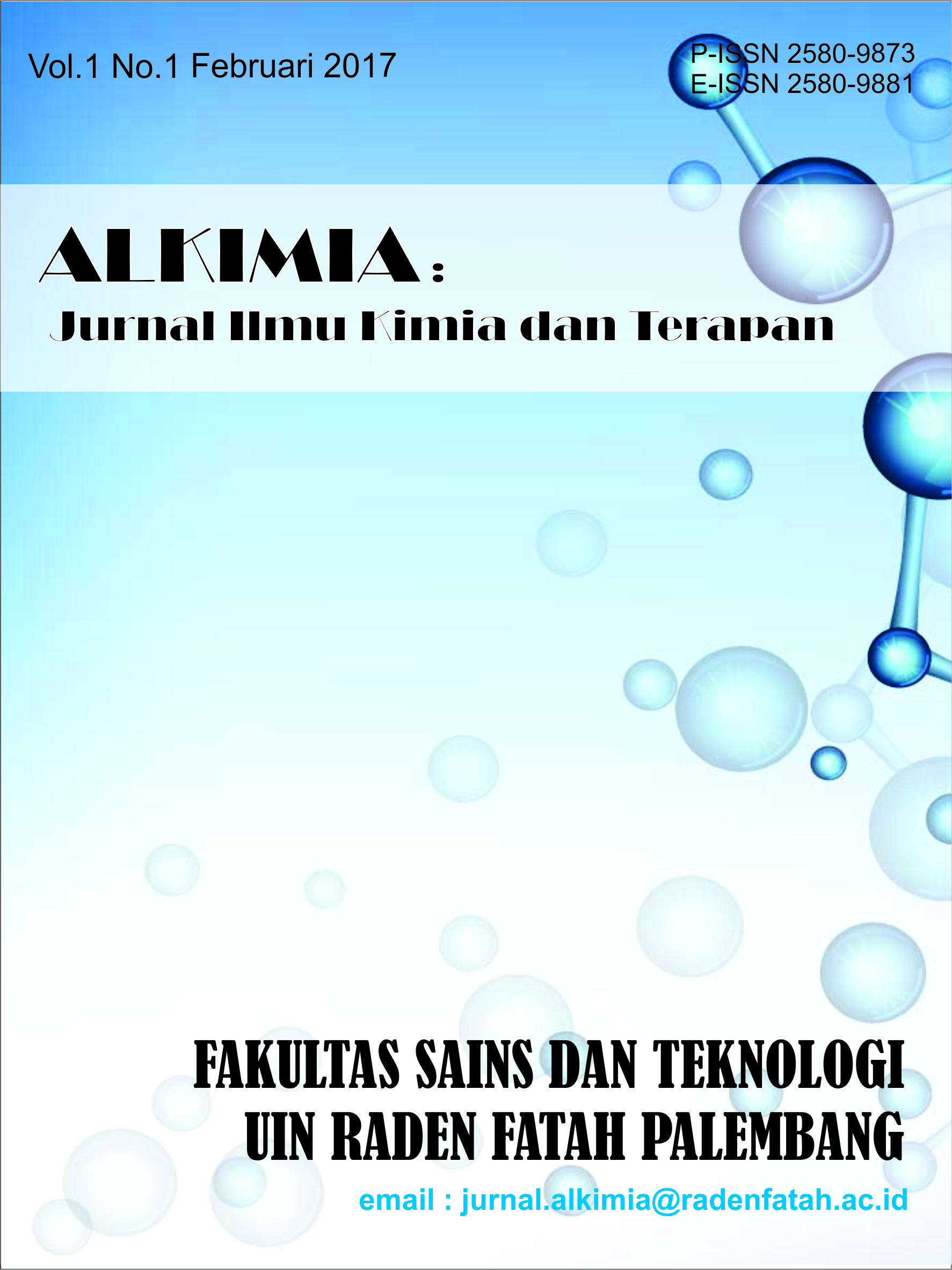Synthesis of Fluorescence Chemosensor Pb2+ and Cu2+ Ions from Pyrazoline Derivatives Compounds with Lanthanum
DOI:
https://doi.org/10.19109/alkimia.v7i2.28441Keywords:
Chemosensor, Fluorescence, Lanthanum, PyrazolineAbstract
Heavy metal ion pollutant waste Pb2+ and Cu2+ are getting attention due to the increasing amount, especially in various industrial field and transportation. The sensor of lanthanum (La) complexes with fluorescence-based pyrazoline derived has the potential to detect Pb2+ and Cu2+ heavy metal ions. The complex compounds were characterized by spectroscopic methode and stoichiometry of the La3+ pyrazoline complex was determined using the Job method. The determination of stoichiometric showed that 1 mole of lanthanum complex compounds can bind 10 moles of pyrazoline-derived ligands so that the predictable structure is bicapped square antiprism. The results of scanning the metal ion complex La3+ with pyrazoline-derived ligands using a UV-Vis spectrophotometer obtained three absorption peaks at 255 nm, 307 nm, and 359 nm with a molar absorptivity value (log ɛ) of respectively in 4.30; 4.25 and 4.13, three peaks are indicating the presence of a transition type π→π* and n→π*. The results of the fluorescence spectrophotometer showed two emission peaks, the absorption peak of the La3+ complex compound was in the 370 nm region with fluorescence intensity of 2925 a.u and a 470 nm region with a fluorescence intensity of 796.4 a.u. The determination of the fluorescence chemosensor (fluorosensor) potential of the La3+ complex compound with the addition of Pb2+ and Cu2+ metal ions showed a significant fluorescence change so that the fluorosensor type was obtained for the La3+ metal ion complex compound with Pb2+ and Cu2+, namely "turn-on" and "turn-off" respectively.
Downloads
Published
Issue
Section
License
Copyright (c) 2025 Yulian Syahputri, Sutanto Sutanto, Erdiana Putri Pertiwi, Linda Jati Kusumawardani

This work is licensed under a Creative Commons Attribution-ShareAlike 4.0 International License.
- The author saves the copyright and gives the journal simultaneously with the license under Creative Commons Attribution License which permits other people to share the work by stating that it is firstly published in this journal.
- The author can post their work in an institutional repository or publish it in a book by by stating that it is firstly published in this journal.
- The author is allowed to post their work online (for instance, in an institutional repository or their own website) before and during the process of delivery. (see Open Access Effect).







.png)




